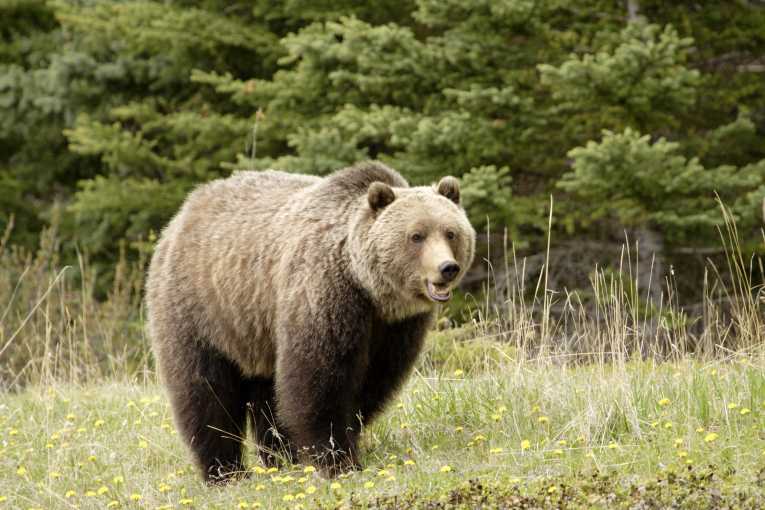The bleak future for polar bears as global warming encourages brown bears to range further north. Something that is not widely realised is that polar bears only evolved as a distinctive species as recently as 200,000 years ago during the Pleistocene.
It is believed that today's polar bears are descended from a group of brown bears that became isolated by glaciers in an area near Siberia and underwent a rapid series of evolutionary changes in order to survive and adapt to Arctic life. These involved a change in the colour of their fur, the shape of their body, sharper teeth and large feet with thick, curved, non-retractable claws that are used for grasping prey as well as providing vital traction when running or climbing on ice.
Polar Bears are the world's largest land carnivore and the only member of the bear family that is entirely carnivorous. They live on a diet entirely composed of seal flesh and blubber. As a result of this relatively rapid evolution into a semi-aquatic Arctic life with a very specialised diet, the polar bear has developed a cranial morphology that is weaker than that of brown bears and less suited to processing tough omnivorous or herbivorous diets.
Polar bears live almost exclusively on the flesh of young ringed or bearded seals. They have 42 teeth and have developed blade-like incisors to shear off pieces of flesh, with strong canine teeth to grasp prey and tear tough hides. Since they swallow most of their food in large chunks rather than chewing it first, strong molars are not necessary and these are much smaller than those of their brown cousins. While their teeth are super-efficient for processing seal flesh and blubber, polar bears' teeth are less suited for processing bones and hard-to-chew diets with lots of vegetation.
The polar bear's low, flat skull with its high-sitting eyes is ideal for a semi-aquatic life and it gives them the advantage of being able to thrust their heads into breathing holes or puppy dens.
A recent study by the on-line research journal PLoS One (Public Library of Science) says that although the heads and muscle power of polar bears and brown bears are similar, tests reveal that the polar bear's skull is a 'weaker, less work-efficient structure' and does not appear to be well-suited to large amounts of chewing.
Although brown bears will eat animals when they are available, they will also eat a large amount of plant material in the summer, which all requires a considerable amount of chewing before it can be swallowed.
It is estimated that the world population of polar bears is between 20,000 and 25,000, of which about 60 per cent live in Canada, but the study concludes that as the earth warms and the brown bears continue to range northwards, this is likely to present polar bears with a significant challenge. Where Arctic foxes overlap with red foxes, it is always the red foxes that end up controlling the prime feeding and breeding areas and the fear is that polar bears will share a similar fate.










